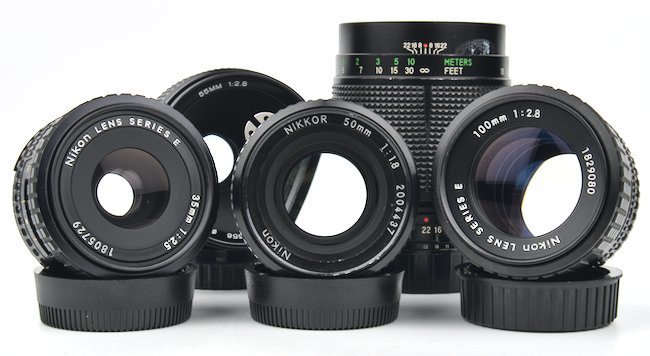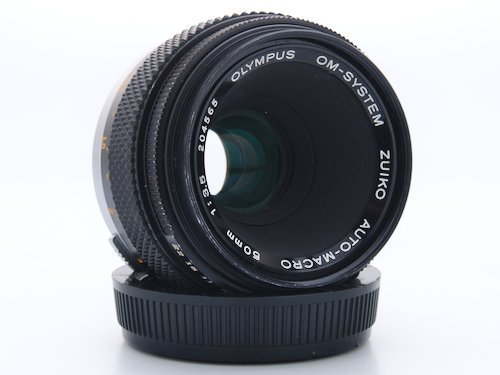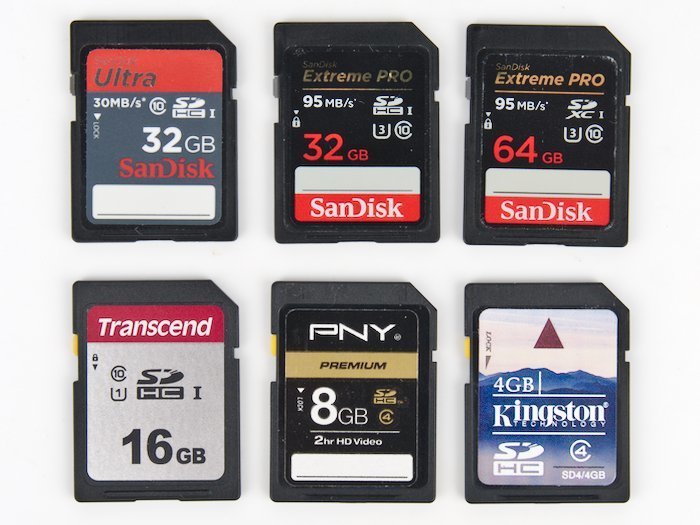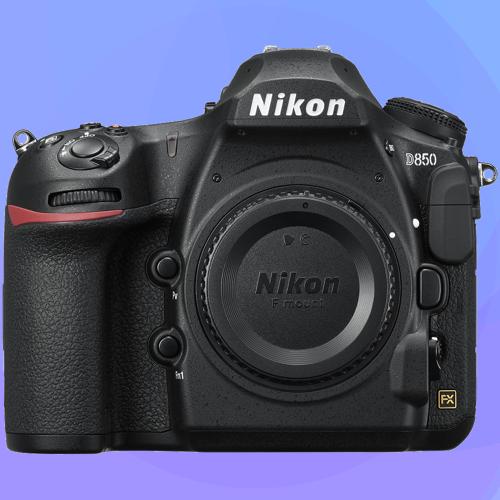
The 5 Best Nikon FG-20 Lenses
- Nathaniel Stephan
- Nikon fg 20
- October 8, 2022
Table of Contents
The Nikon FG-20 is a very good film camera. This article will cover the 5 best lenses for the Nikon FG-20, as well as a handful of alternative lenses.
Affiliate Advertising Disclosure
Outside the Shot is a participant in the Amazon Services LLC Associates Program, an affiliate advertising program designed to provide a means for sites to earn advertising fees by advertising and linking to Amazon.com.
As an eBay Partner, I may be compensated if you make a purchase. I also participate in affiliate advertising programs with KEH and Adorama. More can be found on the Affiliate Disclosure page.
Best Nikon FG-20 Lenses:
- Kit Lens - Nikon 50mm f/1.8 Series E
- Wide Angle Lens - Nikon Nikkor 24mm f/2.8 Ai
- Portrait Lens - Nikon 100mm f/2.8 Series E
- Zoom Lens - Vivitar Series 1 70-210mm f/3.5
- Macro Lens - Vivitar 90mm f/2.8
The best Nikon F-mount lenses are grouped by type of photography and value. There are a bunch of excellent camera lenses to select from that are in price ranges ideal for the value of a FG-20.
Standard Prime Lens
A 50mm lens is a superb choice for a vast array of photography. The types of photography include everyday use, travel, landscapes, portraits, street, and architecture. This is the most popular focal length used on the Nikon FG-20.
Nikon 50mm f/1.8 Series E
https://www.outsidetheshot.com/nikon-f//nikon/nikon-50mm-f18-series-e.jpg does not exist- One of the most popular 50mm lenses Nikon ever made.
- Amazing value.
- Light, small, and compact.
- 52mm filter threads.
See current price and more information on:
If you do not already own one, a great first lens for the FG-20 is the Nikon 50mm f/1.8 Series E. The 50mm f1.8 is really easy to find, has nice photo quality, is cheap, compact, and lightweight.
Make sure to buy the second version of the lens, which has a chrome ring around the body. It is made of aluminum, whereas the first version has plastic parts.
The 50mm Series E lens is known as a pancake lens because of how thin it is. When mounted on the FG-20 it barely sticks out. This is handy for carrying the camera under a jacket so that you can keep a low profile.
Several 50mm manual focus lenses were manufactured by Nikon for the F-mount.
Nikon Nikkor 50mm f/1.4
https://www.outsidetheshot.com/nikon-f//nikon/nikon-50mm-f14.jpg does not exist- Superb optics.
- Optical multi-coatings to improve performance.
- Easy to find.
- Comparatively low-priced.
See current price and more information on:
At the added cost of weight and size, the Nikon Nikkor 50mm f/1.4 is 2/3 of a stop faster. It is a little more expensive than any of the f/1.8 or f/2 50mm lenses.
Voigtländer Nokton 58mm f/1.4 SL II AI-S
https://www.outsidetheshot.com/nikon-f//nikon/voigtlander-nokton-58mm-f14-sl.jpg does not exist- Spectacular optics.
- Has a Meter Coupling Prong.
- CPU Contacts.
- Available for purchase new.
See current price and more information on:
Nikon manufactured a 50mm f/1.2 and 55mm f/1.2, but the value for money is poor. As a consequence of the age of the lenses, you ought to be concerned about the lubricant in the focusing helicoid drying up, spoiling the experience of using the lens.
The Voightlander 58mm f/1.4 is all around a superior option for a high-end lens. The lens has the smoothest focusing ring| I’ve ever used on a manual focus lens. The lens is a total delight to use.
Additionally, the lens maintains compatibility across all Nikon F-mount cameras. The lens has a Meter Coupling Prong, Ai Meter Coupling Ridge, CPU contacts, and has a switch to enable electronic aperture control. You can switch the lens from a Nikon DSLR to a Nikon film SLR seamlessly.
Alternative Standard Lenses
The following are more quality lenses that are comparable options.
- Nikon Nikkor 50mm f/1.8
- Nikon Nikkor 50mm f/2
- Nikon 35mm f/2.5 Series E
- Nikon 28mm f/2.8 Series E
Wide Angle Lens
Nikon Nikkor 24mm f/2.8
https://www.outsidetheshot.com/nikon-f//nikon/nikon-24mm-f28.jpg does not exist- Great paired with a 50mm lens.
- Optical multi-coatings to improve performance.
- Widely available.
- Relatively low-priced.
See current price and more information on:
A good selection for a wide-angle lens is the Nikon Nikkor 24mm f/2.8. It is fantastic for architectural or landscape photography.
There are plenty of wider focal lengths to choose from, but they are frequently are a lot more expensive or show noticeable amounts of barrel distortion. Third-party lenses have clearly lower image quality than lenses made by Nikon.
Nikon 28mm f/2.8 Series E
https://www.outsidetheshot.com/nikon-f//nikon/nikon-28mm-f28-series-e.jpg does not exist- Great when matched with a 50mm lens.
- Optical multi-coatings to reduce chromatic aberrations.
- Easy to find.
- Low-priced.
See current price and more information on:
A less expensive alternative, the Nikon 28mm f/2.8 Series E, is a border-line wide-angle lens. It is attractive to use with the FG-20 because of the low price and ease at which the lens can be found.
Alternative Wide Angle Lenses
In terms of price, the correlation is straightforward. The larger the field of view, the higher priced the lens will probably be. Lenses with larger apertures also sell for noticeably more.
- Nikon 8mm f/2.8 Fisheye
- Nikon Nikkor 15mm f/3.5
- Nikon Nikkon 18mm f/3.5
- Nikon Nikkon 24mm f/2
- Nikon Nikkon 13mm f/5.6
- Nikon Nikkon 16mm f/2.8 Fisheye
- Nikon Nikkon 20mm f/2.8
Portrait & Telephoto Lens
Nikon 100mm f/2.8 Series E Lens
https://www.outsidetheshot.com/nikon-f//nikon/nikon-100mm-f28-series-e.jpg does not exist- 85mm substitute.
- Good price to performance.
- Relatively inexpensive.
- Easy to find.
See current price and more information on:
85mm focal length lenses were not as commonly used as they are today compared to when the FG-20 was first released in 1984. 100mm or 135mm focal lengths were more commonly used because of their more affordable price.
Like all of the other Series E lenses mentioned, the 100mm f/2.8 hits a good balance of cost, capabilities, and functionality. That’s why it was very popular when released and why a great number of copies are available on the used market.
Nikon Nikkor 135mm f/2.8 Lens
https://www.outsidetheshot.com/nikon-f//nikon/nikon-135mm-f28.jpg does not exist- 85mm substitute.
- "Vintage" portraiture rendering.
- Easy to find.
See current price and more information on:
The “vintage” look of this lens is produced by the focal length in addition to the lens only containing 4 elements.
1965 was when the original version of the lens was introduced. There are a total of 6 different versions of the lens, only the last two versions being suitable for the FG-20.
If you go to buy a copy of the lens, the compatible lenses will be listed as Ai-S or Ai.
Alternative Telephoto Lenses
There are plenty of other telephoto lenses to choose from. Lenses longer than 135mm and 85mm lenses will be highly-priced.
| Nikkor 85mm f/2 | Nikkor 105mm f/1.8 |
| Nikkor 105mm f/2.5 | Nikkor 135mm f/2 |
| Nikkor 135mm f/2.8 | Nikon 135mm f/2.8 Series E |
| Nikkor 180mm f/2.8 | Nikkor 200mm f/2 ED |
| Nikkor 300mm f/2 IF-ED | Nikkor 300mm f/2.8 |
| Nikkor 300mm f/4.5 | Nikkor 400mm f/2.8 IF-ED |
| Nikkor 500mm f/4 IF-ED P | Mirror Nikkor 500mm f/8 |
| Nikkor 600mm f/4 IF-ED | Nikkor 800mm f/5.6 IF-ED |
Nikon FG-20 Zoom Lenses
Before cameras had autofocus, in the early 1980’s, there were several lenses made by third-party manufacturers that out-performed Nikkor lenses.
Some of these lenses would be released with the Vivitar brand name. Lenses that have the Vivitar Series 1 branding will have terrific optics.
Vivitar Series 1 70-210mm f/3.5
https://www.outsidetheshot.com/nikon-f//nikon/vivitar-70-210-f35.jpg does not exist- Covers a popular zoom range.
- Excellent for wildlife or portrait photography.
- A rare time when a third-party lens is the best choice.
See current price and more information on:
Alternative Zoom Lenses
Unfortunately, shorter focal length zooms have problems making them a poor option to use with the Nikon FG-20. Age along with wear and tear has caused many Nikon zoom lenses to end up being basically useless.
The only zoom lens I would recommend searching for is the Vivitar Series 1 VMC 35-85mm f/2.8 (Also found on KEH). Bear in mind, it can be difficult to come across.
Vintage Zoom Lens Problems
The lens that could’ve been the leading recommendation, the Nikon Zoom-Nikkor 35-105mm f/3.5-4.5, is unfortunately, a push-pull zoom. Rather than having a zoom ring that turns, the entire focus ring is pushed or pulled to control the lens zoom range.
The grease in just about all of these lenses has deteriorated to the stage where the zoom mechanism will not hold itself up. Because of that, the lens will have tiny changes in focal length when you try to focus. This will be made worse if the lens is not parallel to the ground.
Nikon Macro Lenses
Komine made both of the two recommended macro lenses in Japan. The lenses were sold under many different brand names. Elicar, Quantaray, Panagor, Spiratone, and Rokunar are brands that also released the lenses.
There is a Vivitar 90mm f/2.8 Macro Lens Review and a Vivitar 55mm f/2.8 Macro Lens Review.
For capturing images at macro magnification (1x), the 90mm lens will be the superior pick due to the fact that it has a larger working distance.
For table-top and close-up photography, the 55mm macro lens is the better choice.
Vivitar 90mm f/2.8
https://www.outsidetheshot.com/nikon-f//nikon/vivitar-90mm-f28-macro-lens.jpg does not exist- The best vintage macro lens I've used.
- Available in multiple camera lens mounts.
- Spectacular value.
See current price and more information on:
Vivitar 55mm f/2.8 Macro Lens
https://www.outsidetheshot.com/nikon-f//nikon/vivitar-55mm-f28-macro-lens.jpg does not exist- My second favorite vintage macro lens.
- A fantastic lens for close-up photography.
- Can reach life-size magnification without the need for an extension tube.
See current price and more information on:
Alternative Macro Lenses
- Nikon Micro Nikkor 55mm f/3.5
- Lester A Dine 105mm f/2.8
- Micro Nikkor 105mm f/2.8
Used Nikon Camera Lens Prices
The prices of camera lenses change all the time based on supply and the popularity of vintage lenses. Over the past several years, film photography was going through an increase in interest, which has caused prices to increase.
Economic changes can result in large price changes. Even so, the relative difference in lens prices should be expected to stay similar.
Checking several sites is the smart way to get accurate pricing. If you are lucky enough to find a good deal, buy it quickly, because the best deals are short lived.
What Lens Mount Does the Nikon FG-20 Use?
The Nikon FG-20 uses the Nikon F lens mount. Introduced in 1959, the F-mount is still in use. Over time changes have been made to add metering information, autofocus, electronically controlled apertures, and CPU contacts.
For the FG-20, you need lenses that are manual focus and are either Ai or Ai-S. Those lenses are built with a meter coupling ridge which allows the camera to correctly meter light.
For a complete explanation of the differences between lenses, this page explains it all Nikon F-mount lens and camera compatibility.
Standard Lens Cap Size
The standard filter ring thread and lens cap size for the majority of vintage Nikon lenses is 52mm. It goes without saying, lenses with big front elements will use larger filters and lens caps.
Employing a standardized filter thread size is advantageous because you only need to own just one set of lens filters.
Non Ai vs Ai & Ai-S Lenses
A Meter Coupling Prong was used on early F-mount Nikon cameras. The Nikon FG-20 uses a Meter Coupling Ridge.
Lenses made around the time when Nikon transitioned to Ai lenses may have both types of meter coupling.
Non-Ai lenses will most likely cause damage to your FG-20 if you attempt to mount one to the camera.


